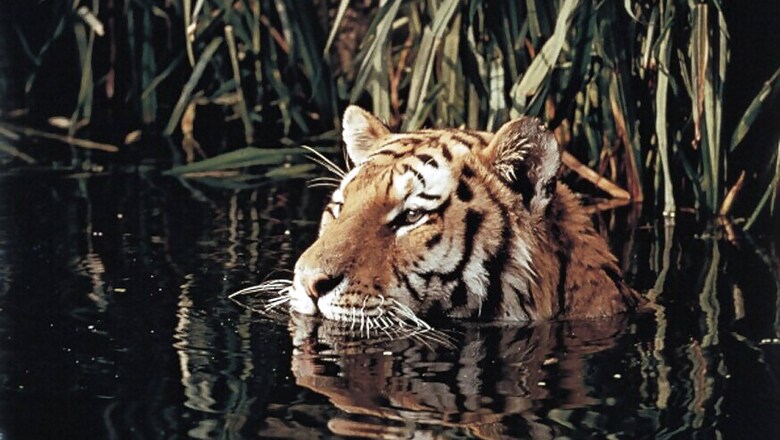
views
New Delhi: Jai is the most famous tiger living in India's wild but over the past few months, tourists coming to Umred-Karhandla Wildlife Sanctuary have returned home disappointed. Jai was nowhere to be seen. The authorities immediately sprung into action. A massive search operation was launched; and a day ahead of International Tiger Day on July 29, i.e., today, Jai was found to have successfully relocated himself to the neighbouring Pauni region.
The purpose of casting Jai as the central figure here was not to highlight his popularity but to bring the spotlight on the humongous chain of efforts India has put in to save the beautiful beast ever since the launch of Project Tiger in 1973.
The Project Tiger, administered by the National Tiger Conservation Authority of India (NTCA), and various associations working towards the common goal of 'Save the Tiger' have contributed massively to not just conserve the big cat's population but also make India the country with largest population of tigers in the world.
Of the estimated 3890 tigers in the wild globally, India alone has 2226 in its forests.
"If the tiger can survive, it's in India." That's what Dr. Yadvendradev Jhala, the eminent wildlife scientist and one of the champions of 2014 tiger estimation, told the author sometime back.
And he explained why.
"We have the largest global population of tigers, close to about 60 per cent of wild tigers survive in India. The people's attitude towards conservation is far better in India than anywhere else in the world. We are very tolerant people. The tiger is an icon of our culture, our religion; and it's the biodiversity umbrella for the conservation of our forest. The government has done a lot to protect it, has declared tiger reserves," he said.
His optimism has its basis in the improved method of counting tigers, which has been devised by Dr. Jhala himself and his colleague at the Wildlife Institute of India, Dr. Qamar Qureshi. They shifted from the rudimentary method of pugmark sightings and developed scientific methodology of estimating tigers, which has now been implemented across 500,000 sq km of forest across India. It involves installing camera traps and then analysing stripe patterns on the inventory of pictures, apart from DNA testing through tiger droppings from regions where cameras can't be installed.
Dr. Jhala also explained what can boost tiger population is measures to improve and enhance its habitat.
"The best thing which has happened for tiger conservation is to make inviolate space for tigers, the core areas of tiger reserves by voluntary, incentive-driven re-settlement of villages from inside tiger reserves. And I think that has given renewed hope to tigers," he said.
"Where we need to go from now is to secure connectivity between these tiger reserves. Most of our tiger reserves are actually too small for long-term conservation unless they are connected and tigers can move between reserves. These are the corridors. So that's where we need to focus our attention and scale landscape conservation."THE COUNTER QUESTION
Some of the wildlife experts believe that because different countries use different methods for tiger estimation, the figures can't be relied upon. It's also because some nations still use outdated methods to count their tigers. The final estimate, according to many scientists, thus can't be trusted.
Where those claims find ground is that tiger habitat in India may have actually shrunken, not grown, thanks to the massive government-authorised development drive through wildlife corridors, where forests have been eaten up to make way for projects such as national highways, etc.
On that note, Dr. Jhala's suggestion to connect tiger reserves hardly finds any takers among the decision-makers holding top government posts.
Governments have also been struggling to bring an end to poaching, with demands of tiger parts in countries like China continuing. The human-wildlife conflict is another area where education and relocation drives need to be scaled up.IN TIGERS LIKE 'JAI', HOPE FLOATS
Tigers changing or extending their territories is an encouraging sign and reason to believe that continued conservation efforts and enhancement of tiger habitat will make 'Tx2 by 2022' a realistic target.



















Comments
0 comment